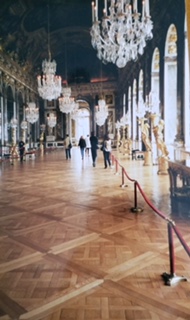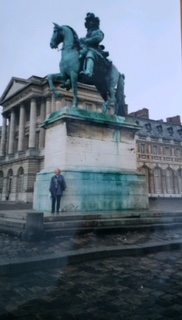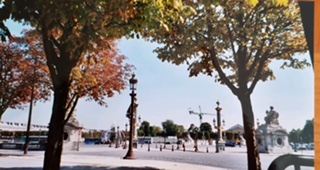How to Write Historical Fiction

We are a participant in the Amazon Services LLC Associates Program, an affiliate advertising program designed to provide a means for us to earn fees by linking to Amazon.com and affiliated sites.
Learn how to write historical fiction by reading the genre and about the craft.
Author Persia Woolley’s book, How to Write and Sell Historical Fiction, for example, covers topics such as traveling to areas of your novel’s setting and how to write about eras of time.
6 Tips on How to Write Historical Fiction
Make research an enjoyable part of your book journey. Read memoirs, visit historical sites such as the Hall of Mirrors in Versailles, France, and get the feel of the period you are writing about. Visit museums. Cemeteries in the area of your novel’s settings also will show epitaphs, dates, etc. Purchase a subscription to history magazines.

I believe that visiting historical places in France enhanced my ability to write my novels. The experience and ambience of actually being there gave me a better feel of the place and settings in The French Connection novels.
6 Tips for the Historical Fiction Writer
- Take time out for personal inspiration. This photo above was taken during Christmas 2018 when I took time out from writing my novel, Mon Amour, Friend or Foe.

- Don’t get in a hurry to publish. It’s okay to change your publication date, no matter if it’s for improving your novel or taking care of life’s interruptions. In fact, Mon Amour, Friend or Foe was first scheduled to be published in 2019. However, due to a planned literary trip this year with family to the place of the novel’s setting, I decided it best to postpone the publication to the early part of 2020.
- Hire an editing team. Naturally, authors eagerly await to see their books out on the shelves in bookstores. But even the very grammatically-polished author of a book needs editors. Hire more than one editor. Hire a copy editor, line editor, and at least two proofreaders (see definitions below). Plan on ordering enough proof copies for each person on your editing team.
- Travel to the location of your story, take photographs (the photos of France below are from previous trips to my novels’ setting places.). Be observant, taking notes on the five senses. Your story will be more authentic.
- Step into your characters’ perspectives. If you walk in the steps of your characters, see how they would see, feel, hear, taste,
- Write down your thoughts and dreams. Don’t wait, or you’ll forget. Make the notes immediately.


Copy Editing, Line Editing, and Proofreading
Paying an experienced copyeditor is worthwhile. Fact checking, one of the things a copyeditor does, is of great significance to the historical fiction writer. Basic copyediting includes checking:
- grammatical, spelling, and punctuation
- content for consistency
- facts, such as names and dates, to see that they are accurate
This copyediting list is by no means exhaustive. The topnotch copyeditor is very thorough and detailed and will do much more than just the basics.
A line editor looks at voice, style, and writing techniques. However, some copyeditors will do all that a line editor does. A proofreader does light editing (spelling and grammatical errors). The copyeditor who also includes line editing and proofreading will compare the edited manuscript to the proof to see that there are no inconsistencies between the two.
Jenny Margotta (jennymargotta@mail.com) is the editor for Silk or Sugar, Return to Chateau Fleury, and the forthcoming novel, Mon Amour, Friend or Foe. Jenny is an exceptional copyeditor and does copyediting as well as line editing and proofreading.
Writers should keep a notebook and pen handy in every room of their homes. When you’re out and about, record thoughts of inspiration in your mobile phone’s note section. Fleeting thoughts disappear in moments. So write them down.
Learn about writing the craft of historical fiction by reading different books on the genre. Listed below are three books on how to write historical fiction.
3 How-to Historical Fiction Books
- Get Started in Writing Historical Fiction (Teach Yourself) by Emma Darwin
- Making It In Historical Fiction by Libbie Hawker is a how-to manual for individuals who want to make historical fiction writing their career.
- How to Write and Sell Historical Fiction by Persia Woolley is a book that contains good information about traveling to places of your novel’s settings and how to write about past time periods. These two topics are closely related to #4 and #5 of the “7 Tips for the Historical Fiction Writer” on this page. Also, A Writer’s Vacation – Visiting the Places in a Novel’s Settings published on this blog on January 31, 2019, covers similarly-related information.
Wondering if writing historical fiction is for you? Stock up on all the historical fiction books you can find that interest you. Read, read, read. Study the craft. Research. Then write about the time period you are interested in. The writer who becomes successful in this genre first puts forth the effort.
Write to inspire your readers!
Like to read historical fiction novels set in France? Click this link, Silk or Sugar, and/or this link, Return to Chateau Fleury, to purchase the first and second books of The French Connection.
Learn more on how to write historical fiction by ordering books like these available on Amazon: